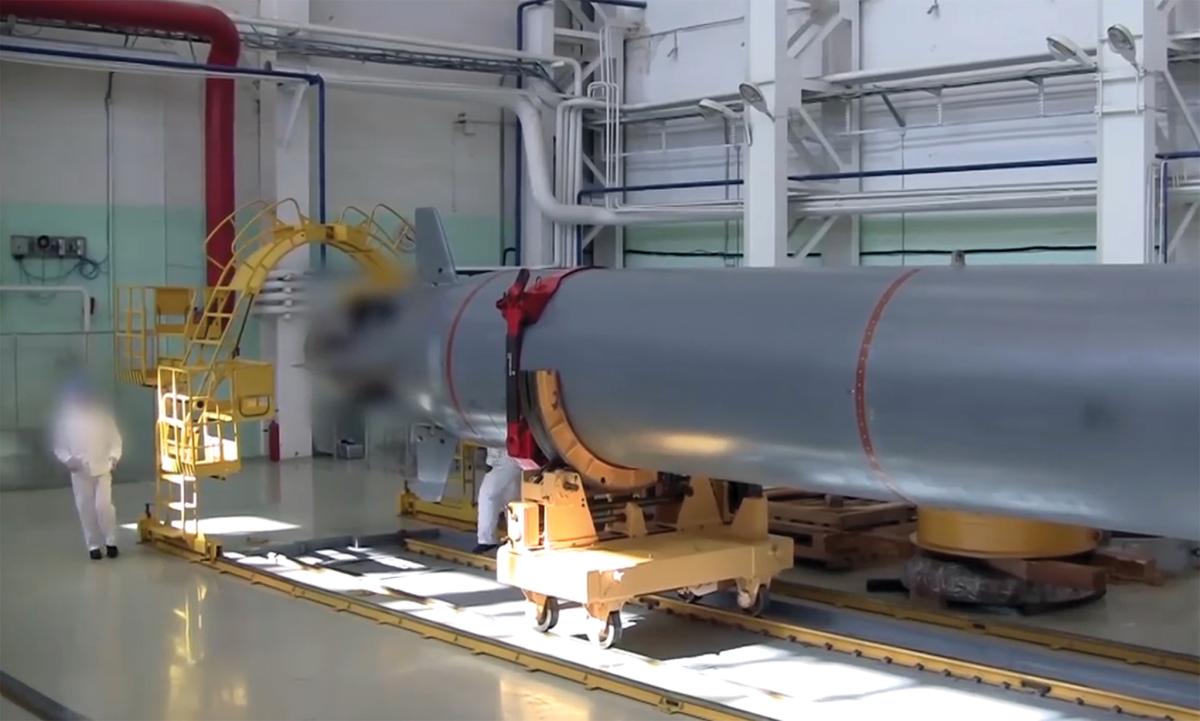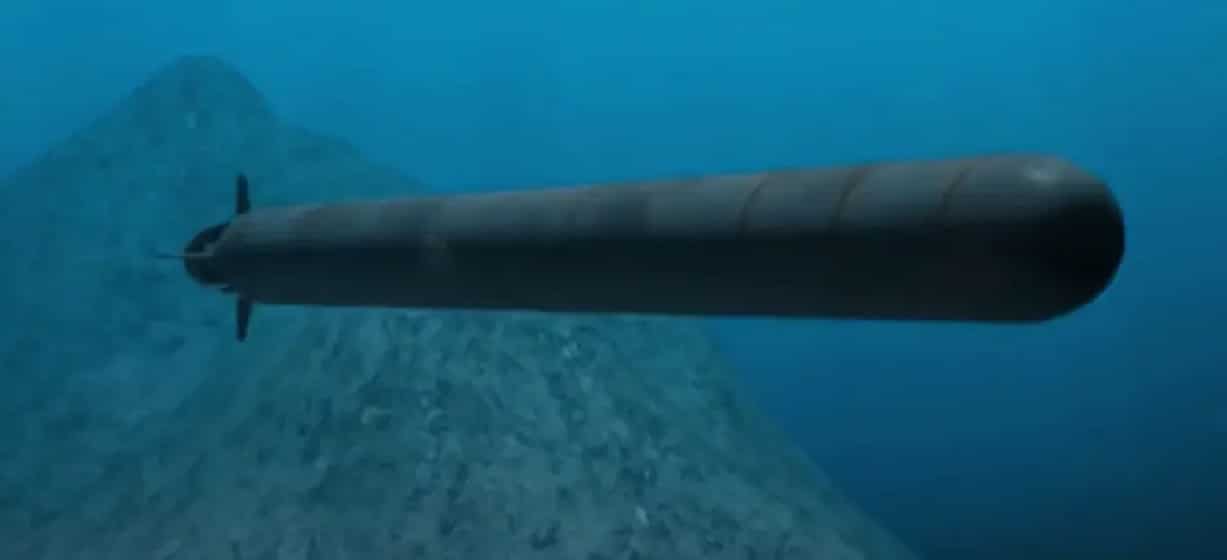From Russia’s nuclear torpedoes to China’s missile silos, satellite images give indications of what the US’ arch-rivals are up to. The developments come amid rising tensions between the US-led NATO and Russia over Ukraine and Beijing-Washington tussle in the Indo-Pacific.
Chinese Air Force’s Deadly Fleet Of ’20s’ — J-20, Y-20 & Z-20 — To Display PLAAFs Military Might At Zhuhai Airshow
Russia’s Poseidon Drone-Torpedo
Satellite images captured by Maxer last month reveal developments in Moscow’s secretive Status-6 program, which the US Navy has identified as Poseidon, an Intercontinental nuclear-powered nuclear-armed autonomous torpedo.
However, the Poseidon is not a new development and had been announced by Russian President Vladimir Putin in March 2018 along with a new range of strategic “invincible” superweapons.

The Poseidon has been described as yet another revolution in the military domain. The torpedo is propelled by a nuclear reactor and armed with a thermonuclear warhead, with an estimated 100 megaton strength.
This capability paints a chilling picture as it is speculated to be twice as lethal as the highest-yielding nuclear weapon tested to date. The Poseidon along with the wide array of Russian superweapons have been designed to circumvent American defense systems.
New article, new Poseidon nuclear torpedo (KANYON) facilities in Severodvinsk, #Russia Arctic.
Likely involved in tests, and new home of ‘interesting’ ship Pr.20183 Akademik Aleksandrov. https://t.co/0XVsUOL9Iz
— H I Sutton (@CovertShores) August 31, 2021
Moscow’s need to upgrade its strategic arsenal was felt after Washington left the Anti-Ballistic Missile Treaty in 2002. The aftermath of which is said to have led the Kremlin to question the efficacy of their existing missile systems and brainstorm possible options for deterrence against American ABM systems.
The Poseidon for all practical purposes is a behemoth of a torpedo, around 24 meters in length and two meters in diameter. The mere fact that it is powered by a nuclear reactor negates any concern over range limitations.
The Poseidon is expected to see its maiden launch from the K-329 Belgorod, which is an Oscar 2 Class Submarine, touted as the largest submarine built in three decades. The K-329 is currently undergoing sea trials.
There are reported plans of the Poseidon being launched by other subs, however, the torpedo’s sheer size makes that a challenging proposition. Moscow will have to either develop a fleet of dedicated submarines or customize its existing fleet to house the Poseidon. The latter will result in a lower number of submarines dedicated to other roles.
The Poseidon development could be of concern for the US owing to its unlimited range. Its perceived ability to strike targets both at sea and off the coast has earned it the moniker “tsunami bomb”.

While Poseidon’s exact effects are not clear, it is believed that the nuclear weapon could be deployed to eliminate entire USN carrier strike groups or inch towards the coasts of major cities undetected initiating a nuclear attack.
Speculations over Poseidon’s capabilities and a dearth of publicly official information only fuel the anxieties over the doomsday narrative. One fears what they do not know and cannot see, and in the case of Poseidon, most analysts are in the dark.
China’s Nuclear Silos
Satellite images released by the Federation of American Scientists (FAS) in July earlier this year painted another doomsday scenario. Pictures of Beijing’s second nuclear missile in the Eastern Xinjiang province site left both Washington and New Delhi panic-stricken.
New Delhi in particular was alarmed as the nuclear missile silo field was housed close to Indian territory. Adding to its concerns was the fact that both the Indian Army and the People’s Liberation Army (PLA) were already engaged in a yearlong eyeball-to-eyeball standoff, which had already resulted in casualties on both sides.
Beijing’s rationale was assessed by military analysts, and the consensus seemed to be that they were planning to bolster their ICBM capabilities “tenfold”.
It may be pertinent to note that the number of identified nuclear silos surpasses even Moscow’s. The number of nuclear missiles in Beijing’s inventory is a bit more than half of the number of missiles Washington possesses.

FAS’ Matt Korda and Hans Kristensen remarked that this buildup was by far the most extensive development in silo construction since the Cold War. How Beijing intends to use these silos remains speculative at best. However, the massive buildup at a time China is seen as a global pariah raises concerns over its intentions.
Strategic affairs researcher, Umair Aslam, founder of the Pakistan-based think tank, ‘Global Defense Insight‘ told The EurAsian Times, “China is undergoing a swift modernization process of its military. Every part of China’s military is benefiting from this process. People’s Liberation Army Rocket Force (PLARF) is also part of this modernization.
We had noticed some latest developments in Chinese missile inventory such as DF-41 Inter-Continental Ballistic Missile (ICBM) and DF-26 Intermediate-Range Ballistic Missile (IRBM). In my opinion, China is developing these silos to arm them with these ICBMs and these silos will pose a greater threat to China’s enemies in the region and most importantly, United States.”
Major General Rana Goswami (Retd), former Director, Nuclear Biological Chemical (NBC) at the Indian Army Headquarters, New Delhi told the Eurasian Times, “It should not be a cause for concern for us, as we are not in a race with China on numbers of nuclear weapons.
As I said earlier, whether you have ten weapons with the means of targeting and hitting Chinese cities (IRBMS), or a hundred of them, it does not matter.”
“It is not a weapon of use, merely of deterrence. I was in the team that conducted a national seminar on nuclear warfare at CME Pune, in 1998, but I don’t have anything on that with me today, but what I’ve just repeated is the blatant fact and accepted throughout the world.”
- Aritra Banerjee is a defense journalist who has worked in both online and print media. He has laid an emphasis on issues related to military human resources, tactical psychology, military-media relations, professional military education, and combat fitness. He can be reached on email: aritrareporter@gmail.com.
- Follow EurAsian Times on Google News




